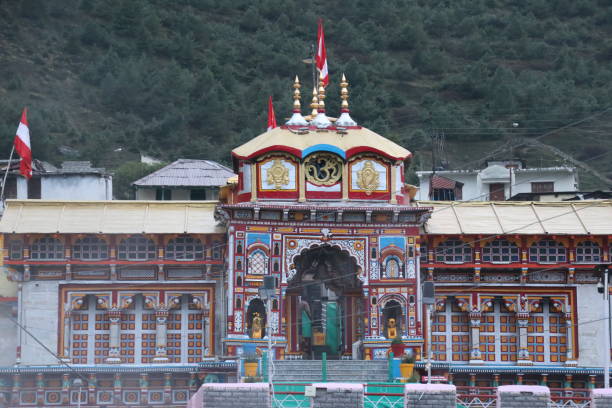Nestled in the Himalayan embrace, Uttarakhand, the “Land of the Gods,” boasts a treasure trove of spiritual and natural wonders. Among the state’s myriad jewels, the Panch Prayag – a convergence of five sacred rivers – stands as an embodiment of faith, culture, and breathtaking landscapes. “Explore the enchanting Panch Prayag of Uttarakhand , where the confluence of five sacred rivers unfolds a tale of spirituality and natural beauty in the heart of Uttarakhand, India.
What is Panch Prayag of Uttarakhand
Panch Prayag – The Sacred Union of Five Rivers
Panch Prayag, in the context of Indian geography and spirituality, refers to the confluence of five major rivers in the Indian state of Uttarakhand, which are revered for their religious and cultural significance. These confluences are named after various deities, and they hold a special place in Hindu mythology and pilgrimage. Panch Prayag of Uttarakhand sites are:
Vishnuprayag: The combining of the Alaknanda and Dhauliganga rivers.
Nandaprayag: The combining of the Alaknanda and Nandakini rivers.
Karnaprayag: The combining of the Alaknanda and Pindar rivers.
Rudraprayag: The combining of the Alaknanda and Mandakini rivers.
Devprayag: The combining of the Alaknanda and Bhagirathi rivers, where the Ganges River begins.
Panch Prayag of Uttarakahnd
The Five Rivers of Uttarakhand
The Panch Prayag, as the name suggests, is a collective term for five holy combining, each unique and powerful in its own right. These are:
- Vishnuprayag: The combining of the Alaknanda and Dhauliganga rivers. The name Vishnuprayag is a tribute to Lord Vishnu, one of the principal deities in Hinduism.
- Nandaprayag: Here, the Alaknanda and Nandakini rivers merge, and it holds a special place in the hearts of pilgrims due to its mythological importance. The Nandakini River is believed to originate from the sacred Nanda Devi peak, adding an emotional dimension to this confluence.
- Karnaprayag: It’s where the Alaknanda and Pindar rivers meet, and it’s associated with the legendary warrior Karna from the Mahabharata. The Pindar River, originating from the Pindari Glacier, is a sight to behold, offering a deep connection to nature.
- Rudraprayag: The combining of the Alaknanda and Mandakini rivers. The town of Rudraprayag takes its name from Lord Shiva, emphasizing the emotional and spiritual resonance of this place.
- Devprayag: The final combining is Devprayag, where the Alaknanda merges with the Bhagirathi River, giving birth to the mighty Ganges. The energy at Devprayag is palpable, and the town’s name means “Godly Confluence,” underlining its spiritual significance.
Spiritual Significance:These combining are deeply enshrined in Hindu mythology and are revered for their divine nature. Pilgrims flock to the Panch Prayag to purify their souls, seek blessings, and feel an emotional connection to the divine. These confluences are also closely associated with the Char Dham Yatra, one of the holiest pilgrimages in Hinduism.
Natural Beauty:The Panch Prayag isn’t just a spiritual wonder; it’s also a visual feast. Nestled amidst the Himalayas, the confluences offer awe-inspiring views of snow-capped peaks, lush forests, and pristine waters. The emerald shades of the rivers merging together create an atmosphere of serenity and deep emotional significance.
An Emotional Journey:A visit to the Panch Prayag is more than a physical journey; it’s an emotional experience that leaves an indelible mark on your heart. The sound of flowing rivers, the sight of ancient temples, and the feeling of being cradled by nature all combine to create a sense of peace and fulfillment.
The Panch Prayag of Uttarakhand is a reminder of the profound connection between nature and spirituality in India. It’s a place where faith and emotions merge amidst the majestic Himalayas. Whether you are a devoted pilgrim or a nature enthusiast, a visit to these confluences will leave you with a deep sense of awe and reverence for the beauty and spirituality of this land. Come and experience the magic of the Panch Prayag – where nature and faith embrace, and emotions flow.

Conclusion:
The Panch Prayag of Uttarakhand is not just a geographical marvel; it is a place of profound spiritual and emotional connection for Hindu pilgrims. Many visit these confluences during their religious journeys, believing that a dip in the holy waters washes away their sins and brings them closer to divinity.
These sacred confluences are set against the backdrop of the majestic Himalayas, offering a breathtaking display of nature’s beauty, with lush forests, towering peaks, and pristine rivers. The Panch Prayag, therefore, embodies the harmonious blend of the natural and spiritual worlds, making it a place of deep reverence and awe.
FAQs
The Panch Prayag in Uttarakhand refers to the confluence of five sacred rivers in the Indian state of Uttarakhand. These confluences are known for their religious and cultural significance, and they are named Vishnuprayag, Nandaprayag, Karnaprayag, Rudraprayag, and Devprayag.
- Vishnuprayag – Alaknanda and Dhauliganga rivers.
- Nandaprayag – Alaknanda and Nandakini rivers.
- Karnaprayag – Alaknanda and Pindar rivers.
- Rudraprayag – Alaknanda and Mandakini rivers.
- Devprayag – Alaknanda and Bhagirathi rivers, the birthplace of the Ganges.
A visit to the Panch Prayag promises a blend of spiritual awakening, breathtaking natural beauty, and a deep emotional connection with India’s rich cultural and natural heritage. It’s a place where faith and emotions merge in the lap of the Himalayas, creating an unforgettable experience.
The Panch Prayag is accessible by road, and there are various modes of transportation available, including buses, taxis, and private vehicles. The nearest airport is in Dehradun, and the nearest railway station is in Rishikesh.

